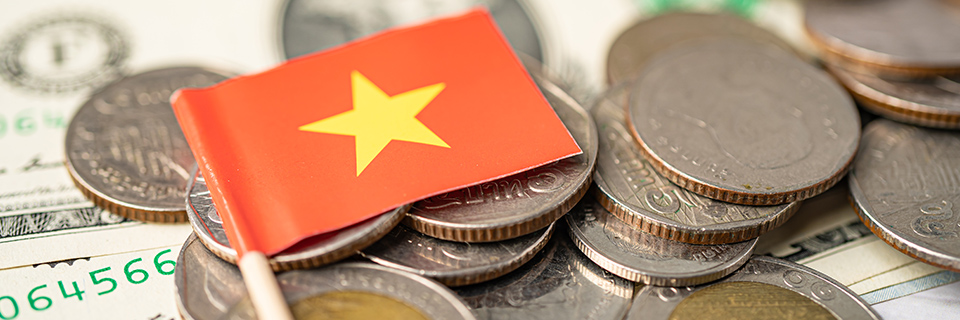
One of the key issues that has plagued the EB-5 Immigrant Investor Program in the late 2010s has been the emergence—and continued deepening—of EB-5 backlogs. Backlogs are not unique to the EB-5 program—rather, they’re due to a United States Citizenship and Immigration Services (USCIS) policy that restricts annual visa allocation based on country of citizenship. All countries have equal limits, regardless of size or demand, and when the quota is reached for nationals of a given country, pending applicants must wait until the next fiscal year. Regarding EB-5 investments, the biggest countries are China and Vietnam, which, as of June 2021, both face backlogs.
The Chinese backlog surfaced in 2014, when the EB-5 was gaining increasing traction in China and the rest of the world. China has long dominated the program, many years accounting for around 80% of all investors. Unfortunately for applicants of Chinese nationality, this has resulted in exceedingly long wait times, with new EB-5 investment participants from China told to expect wait times of seven or more years as of June 2021.
In 2018, after months of speculation, Vietnam joined their northern neighbors in USCIS’s monthly Visa Bulletin. However, while EB-5 demand in Vietnam is evidently strong, it doesn’t compare to the spiraling wait times faced by Chinese EB5 investment participants. Vietnamese investors have certainly been disadvantaged compared to those from most other countries, but the Vietnamese backlog has never reached the depths of the Chinese one. And now, according to Charles Oppenheim, the chief of the Visa Control and Reporting Division of the U.S. Department of State, those who have made EB-5 investments from Vietnam may finally see the backlog clear up by September 2021.
The Jump in the Vietnamese Final Action Date
Considering the dismal movement in final action dates throughout 2020 and now 2021, the shock announcement has come as a surprise to many Vietnamese investors. For much of this period, the Vietnamese final action date, which stood at April 15, 2018, in the June 2021 Visa Bulletin, has only been moving forward slowly, with two months constituting a large advancement. Compared to the Chinese final action date, which had failed to advance for almost a year, the situation was rosy, but Vietnamese investors still expected a long road ahead of them to complete their EB5 investment journey.
And then, the July 2021 Visa Bulletin was released.
The Chinese final action date advanced by three weeks, but that small step forward was so overshadowed by the massive leap of the Vietnamese date that it was hardly news. In contrast, the Vietnamese final action date jumped almost two entire years to April 1, 2020. In a landscape of processing inefficiencies, worldwide public shutdowns, and remarkably slow Visa Bulletin action, this jump has come as a pleasant shock. And officials are hinting at even better news for Vietnamese investors going forward.
The Factors Behind the Vietnamese Final Action Date Prediction
Considering the shocking leap of Vietnamese final action date in the July 2021 Visa Bulletin, the idea of Vietnam achieving “current” status by September suddenly doesn’t seem so unrealistic. And it wouldn’t be the first time a country had escaped an EB-5 visa backlog—India did so in July 2020.
Vietnam’s leap forward may be attributable to two key factors. The first is USCIS’s slow processing of I-526 petitions—indeed, slowing the addition of new Vietnamese applicants waiting for visa availability helps shrink the backlog. While it may sound counter-intuitive, this is not necessarily a bad thing for the Vietnamese investors with pending I-526 petitions, either. With Vietnam stuck in a backlog, these investors will have to wait for their EB-5 visas either way, but at least if they have a pending I-526 petition, their children will be protected from aging out. If they’re simply awaiting visa availability, their children aren’t protected.
The other factor influencing Vietnam’s move is the processing abilities of the U.S. embassy in Ho Chi Minh City. In 2020, as COVID-19 ravaged the world, consular processing was shut down broadly. In 2021, as the world cautiously reopens, different countries are at different stages, and not all U.S. consulates are at equal processing capacity. Ho Chi Minh City has been pumping out the EB-5 visas to Vietnamese nationals, issuing more than 540 by April 2021 and a staggering 320 just in March 2021 alone.
In China and India, the situation is different. The consulates in Guangzhou and Mumbai, respectively, have hardly processed any EB-5 visas for people from their countries who have made an EB-5 investment. In fact, between October 2020 and April 2021, only 14 Chinese nationals and 29 Indian nationals have been recorded as being issued consular EB-5 visas.
In light of this situation, it’s likely that Vietnam will be the only country to hit the FY2021 per-country visa cap of 1,302 visas—nearly double the limit in previous years. That will likely allow the country to clear up its backlog, as predicted by Charles Oppenheim, and hopefully Vietnam will stay out of the Visa Bulletin in the future. However, even if EB5 investment participants from Vietnam face another backlog in 2022, it may not last long. The rollover of visas from the family-based visa categories in FY2022 is predicted to result in more than 20,000 visas for the EB-5 program, enabling each country to claim up to 1,441 visas. This spike could also help drive down the Chinese backlog, as long as Guangzhou starts upping its processing capacity.











